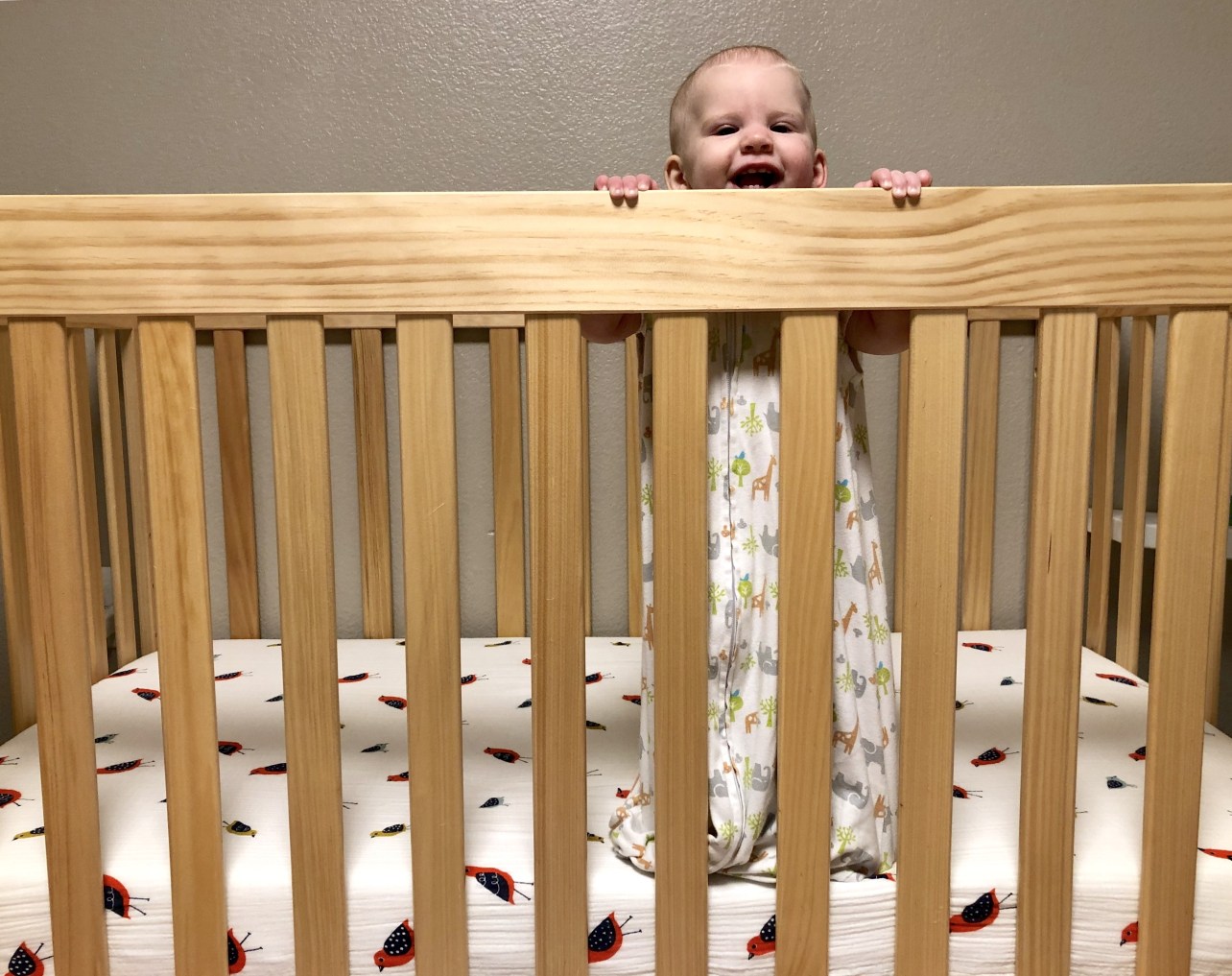The American Academy of Pediatrics (AAP) recommends room sharing with your baby for the first six months to one year of life. This recommendation was made in an effort to decrease the risk of SIDS and reactive bedsharing. Some families find great comfort in having their babies in cribs or bassinets in the same room. Others find that it is difficult for anyone to get quality sleep. Here are some tips for getting some better sleep if you are going to share a room with your baby.
Placement of the Crib
If you’re going to be sharing a room with your baby, crib placement is something that needs to be considered. Newborn babies in a bassinet may need to be closer to a parent if there are frequent feedings at night. This allows the parent who is feeding to be able to put the baby back down after feeding. If Mom is nursing and is finding it hard to sleep through baby’s grunts and groans, consider placing the bassinet on your partner’s side of the bed.

Once your baby is moved to a crib, try to find a place in your room that is away from your bed, preferably at the foot of the bed or beyond that. Some parents create a small nook for their child and use a room divider so the child cannot see the parents in their bed. This can be especially helpful for when children are standing! Please avoid placing blankets or quilts over a crib to block your child’s view. These pose a safety risk to your baby.
Dark and Noisy
A dark room is optimal for any sleep environment. If you’re going to share a room with your child, make sure your room is dark during the day and at night. It can be hard for babies to take naps in brighter spaces. We have worked with so many families who report that their rooms are dark, but not too dark. Make it darker!
White noise is great for blocking out environmental noises. Using a white noise machine can put a sound barrier in between you and your baby. You will still be able to hear your baby if she cries, but it may help your baby from waking if one parent is snoring or tossing around a lot. White noise should be the level of a running shower.
Prepare before baby’s bedtime
Many parents report that their child wakes up the minute they enter the room. If your home has creaky floors, you may want to put down some rugs in your walking pathway. It can also be helpful to gather your bedtime preparation items before your baby is put down for bed. This will prevent extra trips into the bedroom. Consider brushing your teeth in a different bathroom if that is an option.
Temporarily Separate During Sleep Training
If you are going to be doing some sleep training, it may be hard to implement some plans while you are sleeping in the room. Some parents may find they can be more consistent if they do not share a room with their child for a few nights. Once your baby is sleeping better, they have a greater chance of sleeping more deeply and for longer stretches. Then it would be easier for parents to sleep in their own bed again. While the fold out couch may not be as comfortable, it would be a temporary alteration.
Be Consistent
This can be one of the hardest aspects of sharing a room wtih your baby! It can be so tempting to rock your baby back to sleep if they wake up, or feed them extra times in an effort to get them to sleep faster. If these things are working and everyone is getting the sleep they need, then it’s not a problem. But, if more sleep is needed, it’s important to be consistent while you implement your changes.
Be Safe
Regardless of whether your room share or not, safe sleep practices are very important. This means your baby should be placed to sleep alone, on their backs, in their cribs. Cribs should be free of bumpers, toys, loose blankets, and should be used to manufacturer’s guidelines. Rooms should be cool (68-72 degrees) to avoid overheating. If you need help deciding how to help your baby sleep better while room sharing or if they are in their own room, contact us! We can help you put together a plan that feels right for your family.

